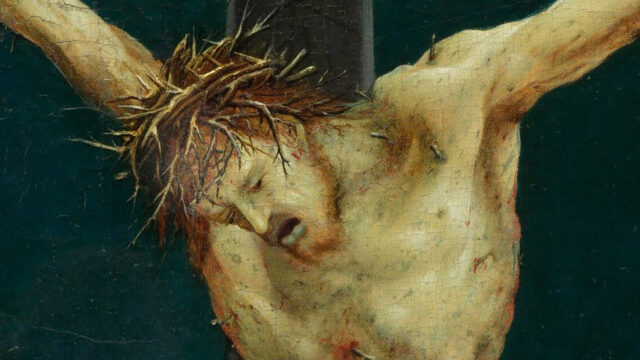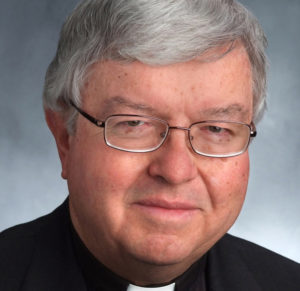
Q. My question centers on the physical appearance of the body of Jesus as he hangs on various crucifixes. I have yet to see one which conveys the suffering that Christ must have experienced during his scourging, when straps covered with iron hooks penetrated to the bone and tore off large pieces of flesh. To look at the crucifixes in our churches today, you would never grasp the degree of suffering which Our Savior must have undergone, and I am wondering why. (Brookhaven, Georgia)
A. Certainly the suffering of Jesus during the Passion went beyond what we could ever imagine. I remember many years ago, as a seminarian, reading a book entitled “A Doctor at Calvary.” It was written in 1950 by a French surgeon named Pierre Barbet and described the Passion in detail, including the scourging. Scourges have been found in the catacombs made of brass chains tipped with lead, and the Shroud of Turin would indicate that Jesus was struck with such scourges more than 100 times.
Interestingly, the Crucifixion does not appear regularly in Christian art until the sixth century. Scholars suggest that early Christians were reluctant to portray their Savior in that way because crucifixion represented a dishonorable death in the Roman world, a fate reserved to slaves and criminals.
During the Middle Ages, the crucified body of Christ began to be shown more and more realistically. A painting done in 1503 by Lucas Cranach that hangs now in a museum in Munich displays blood spouting out of Christ’s nailed feet, the feet bizarrely twisted together and shapeless.

Such depictions were offered during a time when plagues ravaged Europe, wide-scale death was a daily occurrence and criminals were still executed publicly. Artistic tastes change, and we in the 21st century seem to shy away from such graphic images, but it helps to be reminded of all that Christ went through on our behalf.
Q. Recently you wrote a column about the vocation of singles in the Catholic Church and the need to pray for them. Unfortunately, you left out a whole cohort of people: single parents.
I have heard of only one ministry in the church for us, and it was not in our diocese. We, as single parents, are expected to support, guide and educate our children in a similar fashion to married folks, but we get none of the time and attention paid to married couples.
Maybe it’s because the church is run by a bunch of single guys who cannot possibly fathom what it is like to be all alone as a mother or father with the responsibilities of home-care, child care and work life. It is absolutely exhausting, and you are constantly second-guessing yourself because you know that the life and welfare of another human being falls totally on your own shoulders and no one else’s.
Priests should reach out and invite single parents to their rectories for meals and recreation. Perhaps, too, you could find married couples who might take single parents under their wings, mentor them and help see to their needs. (City of origin withheld)
A. This writer speaks eloquently to the plight of single parents, not an insignificant segment in contemporary America. I read recently that in the state of New Jersey, 30 percent of children currently live in single-parent households.
In terms of financial assistance, Catholic Charities in some instances has been able to help; the website of Catholic Charities USA indicates where grants might be available for such needs as housing, medical and dental care and legal assistance. But with regard to broader programs — such as help with parenting skills — I would agree that the church is only now beginning to catch up with the need.
The Archdiocese of Newark, New Jersey, for instance, offers support groups specific to single parents — providing them an opportunity to associate with their peers and to talk about the various struggles they face bringing up children alone. Throughout the country a number of individual parishes are beginning to offer similar programs.
The parish of St. Stephen in Valley Center, California, for example, offers single parents the chance to meet regularly to discuss such challenges as “ride sharing, getting children to and from activities, babysitting, budgeting, planning and dealing with alternate holiday schedules and visitations.” I would recommend contacting the family life office in your diocese to see whether such programs might be available locally.






